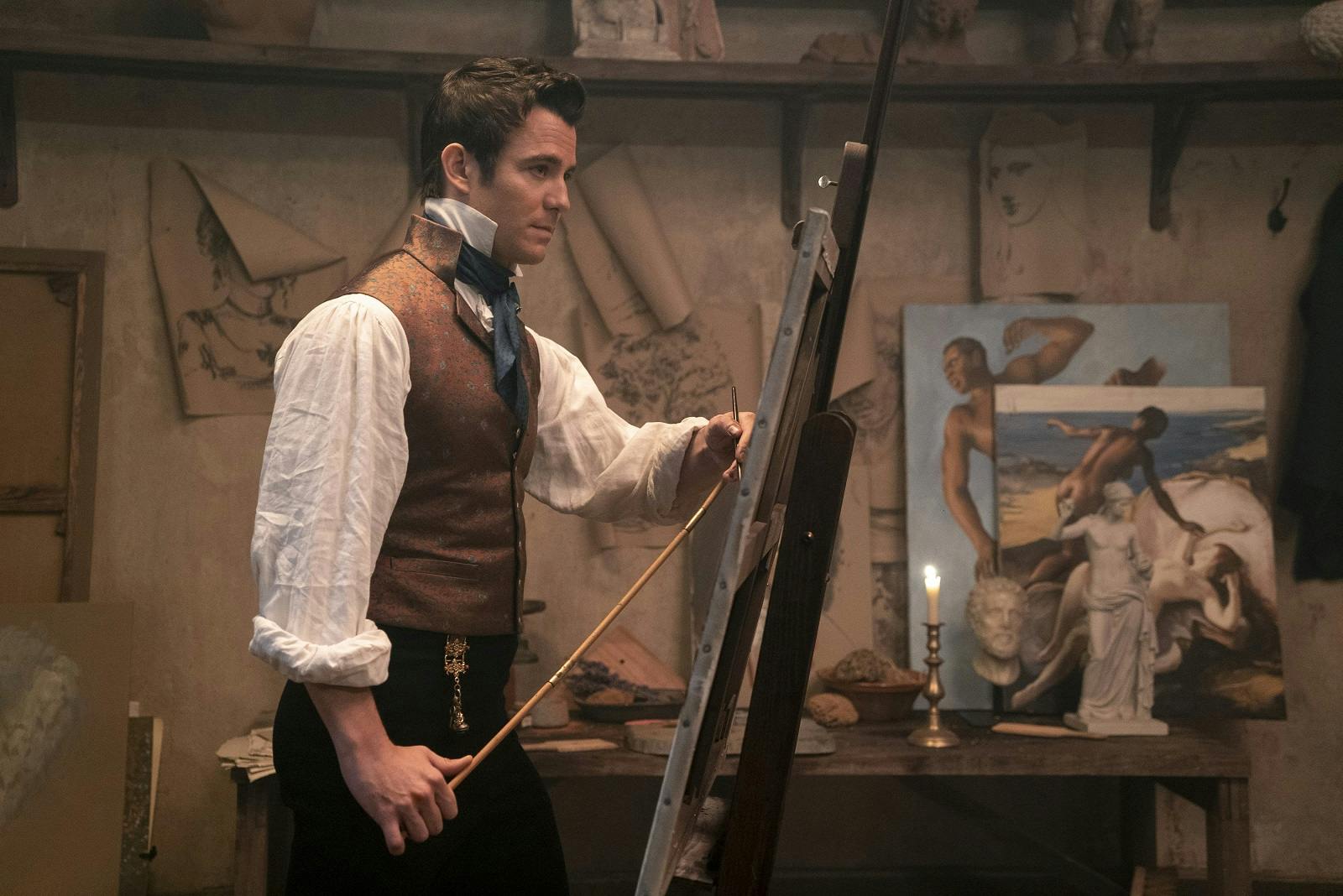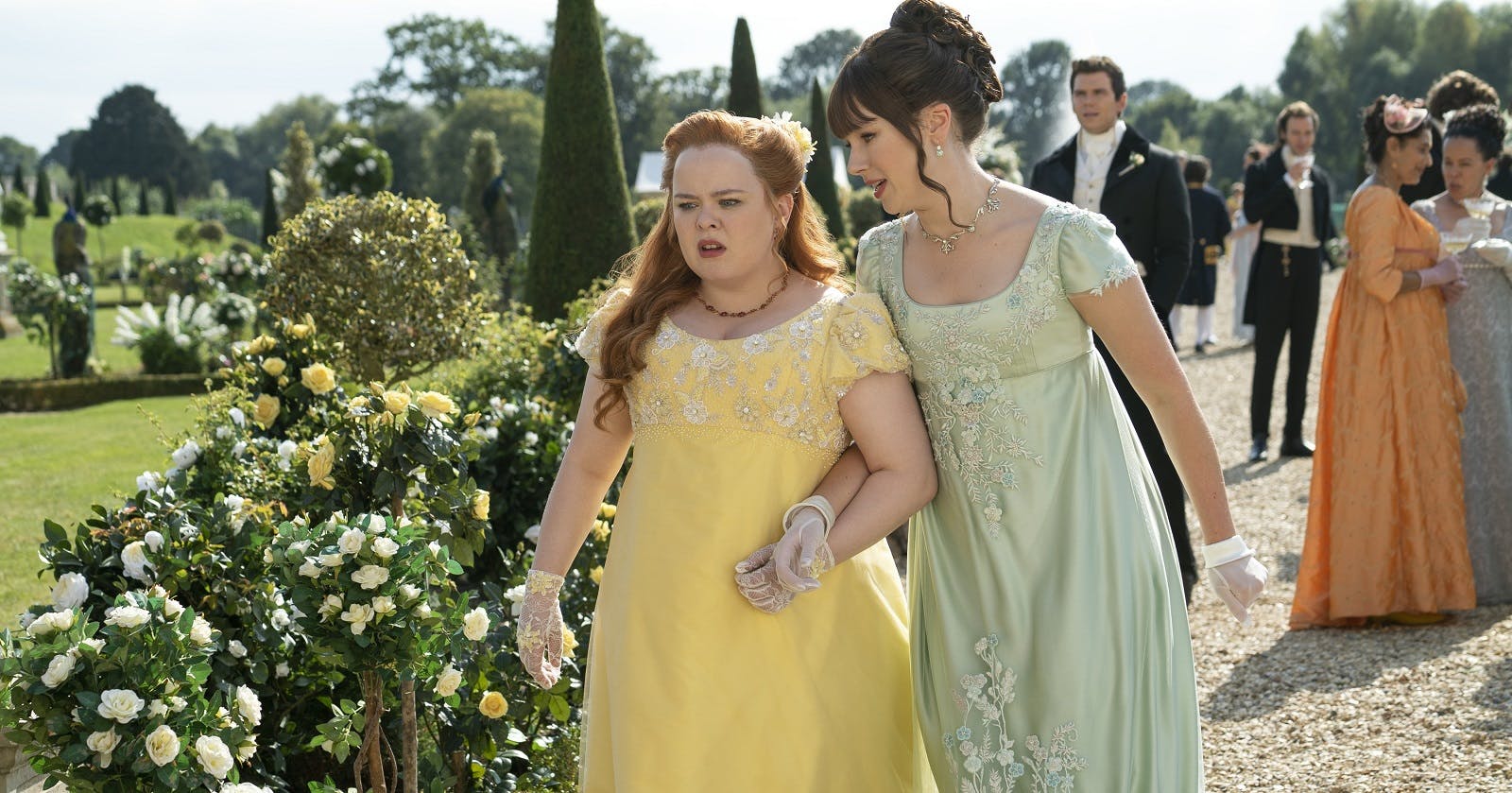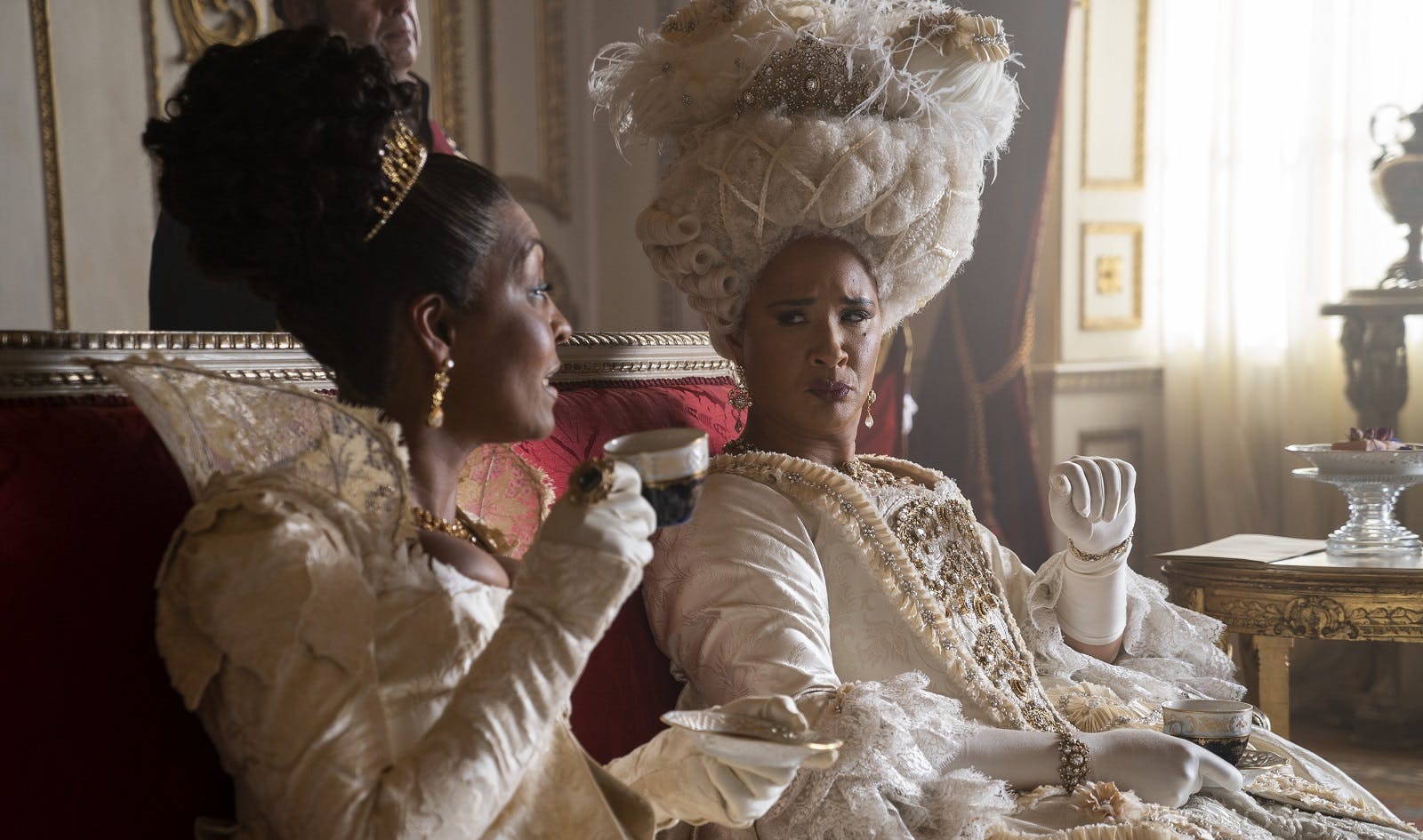Queer representation is a major blindspot for Netflix’s Bridgerton, exemplified by the audience response to Benedict, the second Bridgerton brother. His introduction seemingly signposted a coming-out arc in season 1, frustrating fans when this never came to fruition. An unintentional fake-out that just highlights the lack of queer characters overall.
In the trope-heavy world of Bridgerton, the subtext was obvious. Benedict is an artist who often acts as a wry commentator and supportive advisor to his siblings’ personal drama. His first storyline involves him befriending a queer aristocrat and joining the man’s bohemian, sexually fluid social circle. But instead of being a journey of queer self-discovery, this arc just introduces Benedict to the wonders of sex with women.
Like his sister Eloise, Benedict’s role is queer-coded yet restricted by the text of the Bridgerton novels, where every Bridgerton sibling is straight. Meanwhile, in the supporting cast, queer representation declined from tokenism in season 1, to nothing at all in season 2. A bizarre oversight for a show that markets itself on inclusivity.
Bridgerton’s inclusive branding is, of course, criticized in its own right. The show welcomes a racially diverse cast to a lighthearted faux-Regency setting, expanding the scope of a notoriously conservative genre. At the same time, it has also faced pushback for racist storytelling choices and incoherent political worldbuilding. In order to enjoy season 2—a passionate enemies-to-lovers romance between a white British aristocrat and an Indian ex-pat—you must ignore any prior knowledge of the British Empire’s atrocious history in India.
Suspension of disbelief is paramount, and Bridgerton fans are happy to perform these mental gymnastics. The show’s creators and target audience share an understanding of what we’re here for: An escapist, ahistorical riff on Regency romance tropes. For some reason though, this philosophy fails to embrace queer people.
Can Bridgerton bring queer love to Regency England?
Before they give meaningful screentime to queer characters, Bridgerton‘s creators must reconsider a complicated question about the show’s worldbuilding: Does homophobia exist in this universe?
Season 1 effectively deleted the concept of racism from 19th-century England, smoothing the way for interracial relationships. However, the role of queer sexuality is far murkier. In season 1, after Benedict walks in on his friend Henry Granville having sex with another man, Henry explains that he has an open marriage. His wife is free to do as she wishes, while Henry has a secret boyfriend—who publicly courts young women to protect his place in society.
“We live under constant threat of danger,” Henry tells Benedict. “I risk my life every day, for love.” Henry makes it clear that he and his lover would face violent retribution if their affair was discovered. A major problem if the show wants to give queer love stories equal footing.
Forbidden love is already a staple trope for Bridgerton, but there are different levels of “forbidden.” Much of the show’s conflict revolves around scandalous secrets, whether that’s the identity of Lady Whistledown or sexual impropriety behind closed doors. Drawing from tropes popularized by Jane Austen, sexism and classism provide constant fuel for drama.
But in a fictionalized Regency narrative, these social restrictions feel less harmful than outright racism or homophobia. They provide a fun, quaintly old-fashioned sort of risk. There’s a big difference between the short-lived scandal caused by Eloise’s flirtation with Theo Sharpe and Henry Granville’s insinuation that he’d be murdered for being gay.
This kind of high-stakes threat doesn’t belong in the escapist world of Bridgerton—not just emotionally, but because every Bridgerton romance takes place in a public forum. There are only so many times you can have a couple’s eyes meet secretly across a crowded room. So if the show wants to give queer characters the same opportunities for love and happiness, it must create a world where queer love can exist in public.
Bridgerton needs to destroy the closet—and since traditional Regency romances thrive on matrimony, there needs to be some equivalent of same-sex marriage as well.
Obviously there are logistical issues to consider. What about inheritance? What about gender roles and virginity? Do sexist double standards carry over to gay and lesbian couples? A queer-inclusive Regency setting raises plenty of questions—some already tackled by romance novelists like Cat Sebastian and K.J. Charles. But if Bridgerton can magically erase slavery and colonialism, then it can surely handle these issues, too.
Two seasons in, Bridgerton’s lack of queer representation feels actively weird. The show juggles multiple courtships and coming-of-age arcs each season, and to exclude queer people from this narrative is both lazy and unpleasant. Season 3 needs to shake things up—preferably by repositioning one of the Bridgerton siblings as canonically queer, paving the way for a more ambitious departure from the books.





